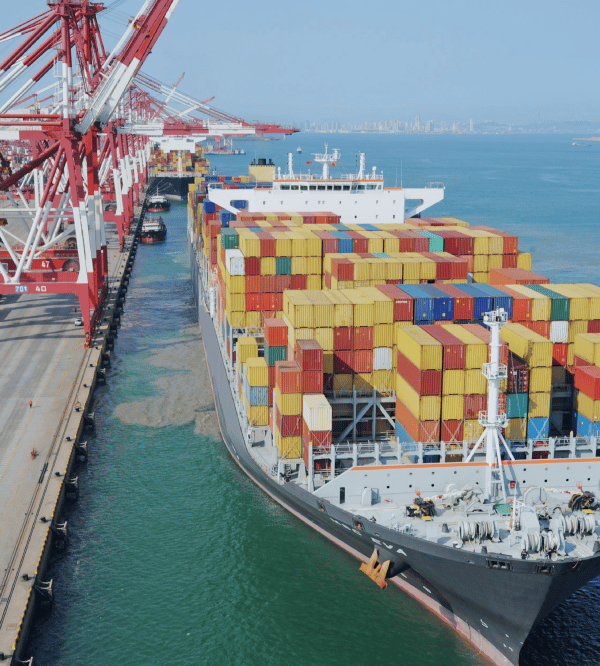Lost Bill Of Lading Requirements & Procedures
This article is informational and describes requirements if ever found in an unpleasant situation, such as misplacement or loss of the most important document in the shipping industry. As the title suggests, the procedures and requirements surrounding a lost Bill of Lading are both very complex and detailed.
Contracts of Carriage are commonly issued in two forms: OBLs (Original Bills of Lading) and Seaway Bills. The lost or destroyed OBL process is not applicable to cargo moved under a Seaway Bill, because the presentation of a Seaway Bill is not required to obtain delivery of the cargo.
By definition, an Original Bill of Lading is a contract of carriage that establishes ownership of the cargo described therein, and a party’s right to take possession of the cargo. The party in possession of an OBL may demand delivery of cargo by surrendering the OBL to the carrier or its agents. OBLs are negotiable, and accordingly, the right to take possession of cargo can be transferred by endorsement, similar to a bank check. Even OBLs which are made non-negotiable by direct consignment could be used to fraudulently obtain possession of the cargo by a party other than the named consignee. Release of cargo carried pursuant to an OBL is only obtained by surrendering the document to the carrier.
WHAT SHOULD A SHIPPER OR CONSIGNEE DO IF AN OBL BECOMES LOST, MISSING, OR DESTROYED?
Adhere to the following procedure for obtaining the release of cargo at destination without presentation of the OBL, or to have the OBLs reprinted at origin. Please note the below list of documents required in order to proceed with the Lost OBL process:
- Statement on Shipper letterhead that describes the circumstances of the loss
- Shipper’s Authorization – on Shipper letterhead
- Shipper’s LOI – on Shipper letterhead
- Consignee LOI – on Consignee letterhead
- Bank Guarantee (on Bank letterhead)
- Commercial Invoice
- Packing List
- If lost by an express mail company, a letter from them detailing the loss is required, in addition to the letter from the shipper.
BELOW ARE ANSWERS TO SOME COMMONLY ASKED QUESTIONS:
What is a Letter of Indemnity (“LOI”) and why must an officer of the company sign it?
An LOI is a formal letter stating that the company signing it will not make a claim against a carrier, arising out of the carrier’s compliance with the request to either release the cargo without presentation of the OBL or to reprint the OBLs. The LOI also obligates that company to defend the carrier against any claim made by a third party arising from the request. Because an LOI is a legal, and financial obligation of the company, an officer’s signature is needed as evidence that the person signing has the authority to bind the company in this manner.
Why do you require an LOI from both the Shipper and the Consignee?
In addition to providing the carrier with protection against a claim from either the shipper or the consignee for misdelivery of the cargo, an LOI from both parties also ensures that neither party is actually in possession of the OBLs. The LOI serves the purpose of instructing the carrier to either reissue the lost OBL, or release the cargo without presentation of the OBL, and both parties need to be in written agreement about what action should be taken.
Why is an LOI alone not sufficient?
While an LOI contains an obligation for the company signing it to indemnify the carrier, the LOI does not ensure that the company has sufficient funds to fully comply with its indemnification obligations.
Why must we obtain the Shipper’s Authorization if the Shipper provides an LOI?
The Shipper’s Authorization serves a different function than the LOI and Bank Guarantee. The Shipper’s Authorization ensures that the Shipper is not retaining the OBLs while awaiting payment for the cargo; we need to verify the underlying sale has been completed in order to agree to deliver the cargo.
Why is a bank guarantee required if a bank is not involved in this shipment?
An OBL is proof of title; if the carrier delivers cargo to the consignee without presentation of the OBL, and another party presents the OBL and requests a delivery, the carrier could be held liable for up to twice the full value of the cargo, plus other fees and costs. The bank guarantee, which may also be referred to as a financial instrument, ensures that the carrier is protected from payment of all liabilities and costs related to the delivery of the cargo without the presentation of the OBL.
Why does the bank guarantee have to be for a period of at least 24 months?
The statute of limitations for cargo and property claims generally is twenty-four (24) months, so the guarantee must be sufficient to cover the entire period of potential liability.
The original Story can be found at morethanshipping.com Article by Ariet Haxhiaj








